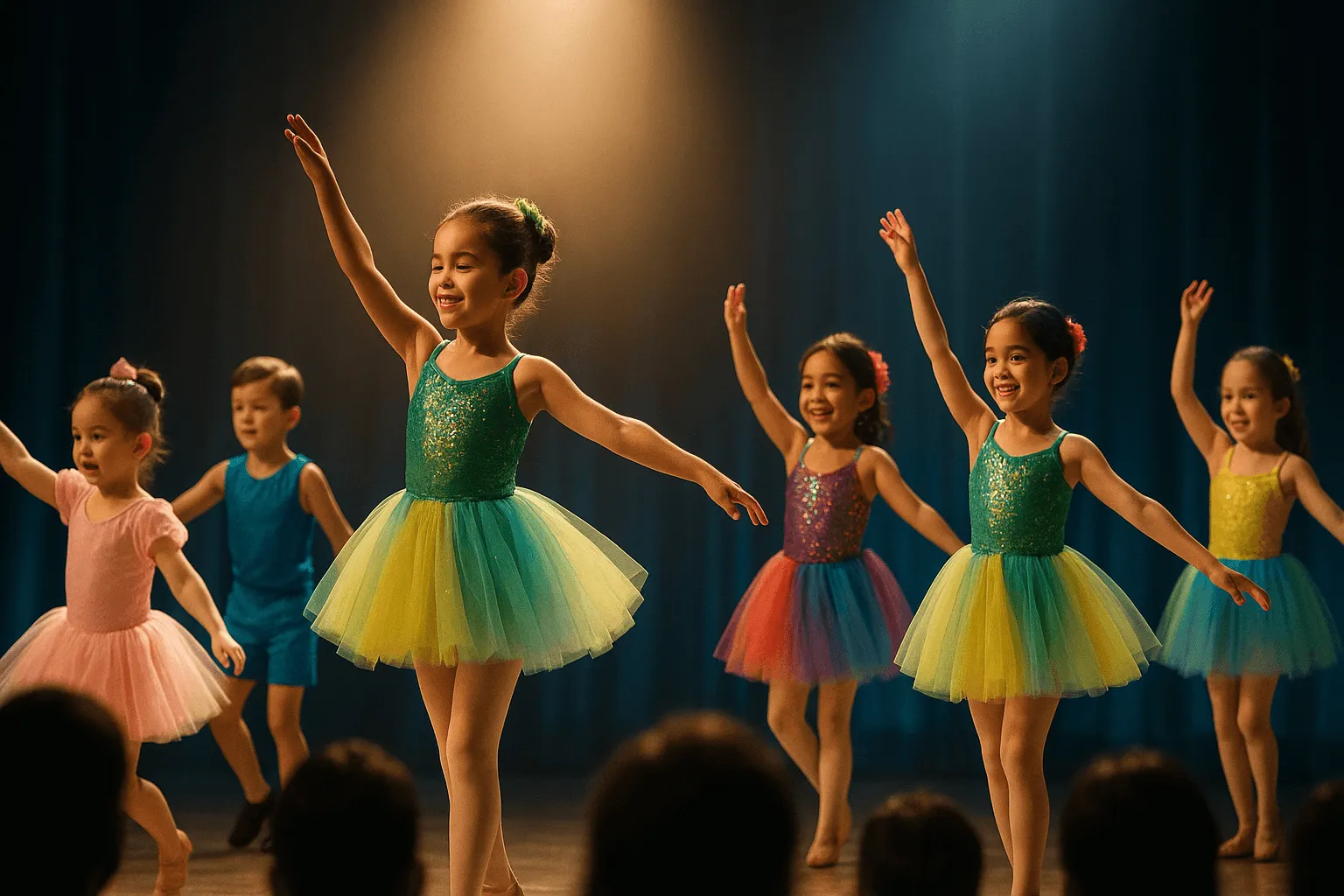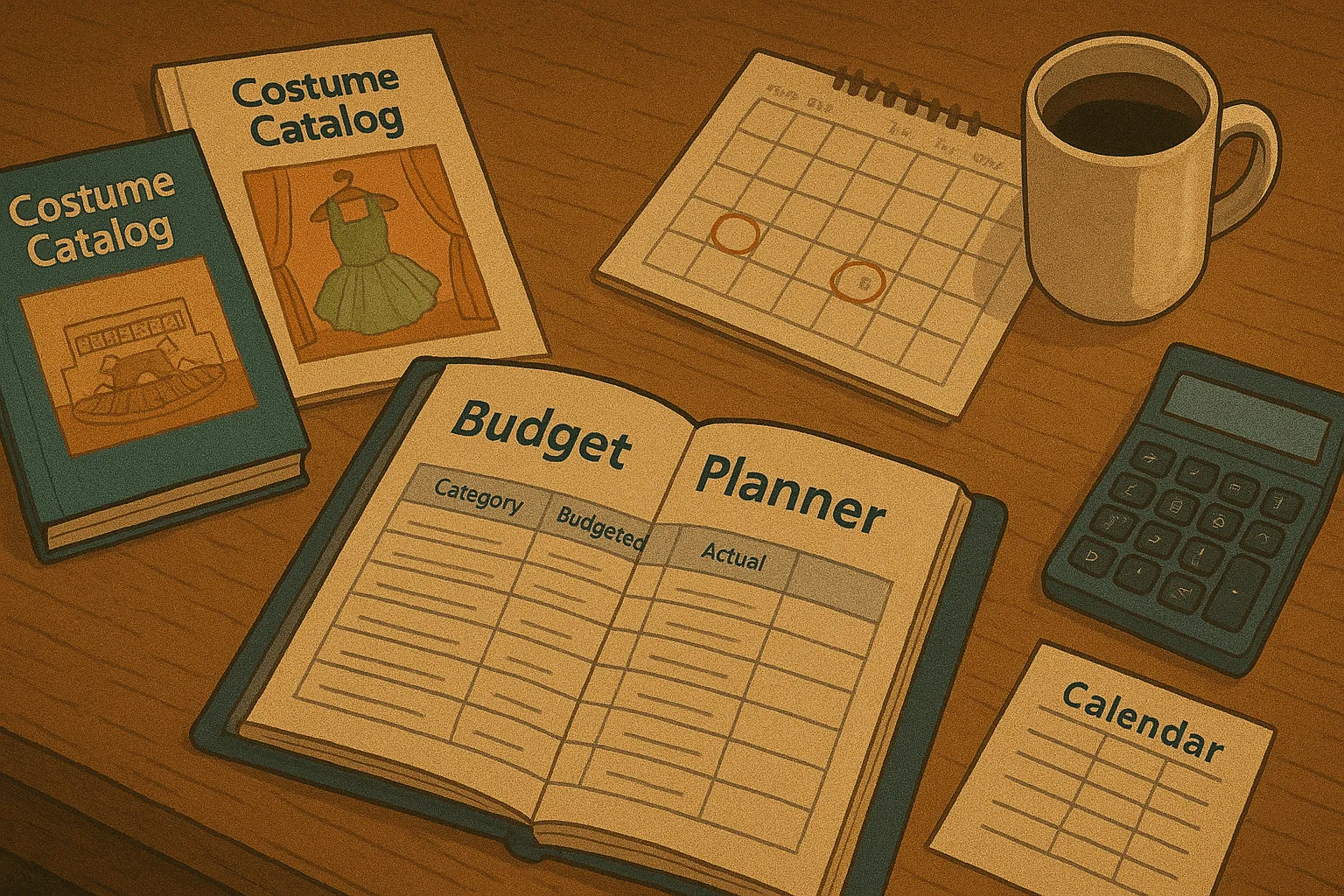Dance Recital Budget Planning: How to Manage Costs Effectively in 2025
Introduction
Planning a successful dance recital involves more than just choreography and practice schedules—it requires careful financial planning to ensure the event runs smoothly without breaking the bank. Dance studio owners often find themselves juggling multiple expenses while trying to create memorable performances for their students and families. With recital costs typically ranging from $5,000 to $15,000 depending on studio size and location, having a structured budget is essential for financial success. This guide will walk you through the critical components of dance recital budgeting, helping you identify expenses, implement cost-saving strategies, and develop effective ticket pricing models to create a spectacular show while maintaining financial stability.
Whether you’re organizing your first recital or looking to optimize your existing budget process, understanding the financial landscape of dance productions will help you make informed decisions that benefit both your studio and your dancers. By applying strategic planning to your recital budget, you can focus more energy on what truly matters—showcasing your students’ hard work and talent.

Why Recital Budgeting Matters
Dance recitals represent a significant investment for studios, often serving as both the culmination of a year’s training and a major revenue opportunity. Beyond the artistic value, these events play a crucial role in your studio’s business model, potentially generating revenue through ticket sales, merchandise, and increased enrollment from impressed audience members.
Proper budgeting does more than just track expenses—it transforms your recital from a financial uncertainty into a controlled, predictable business operation. Without a comprehensive budget, studios risk unexpected costs that can quickly erode profits or even result in losses. The financial stress from poorly planned recitals can distract from the artistic elements, diminishing the experience for everyone involved.
Moreover, transparent budgeting builds trust with dance families who are investing in costumes, tickets, and other recital-related expenses. When parents understand where their money goes, they’re more likely to support pricing decisions and additional costs. This transparency creates a stronger studio community and can significantly improve retention rates.
By mastering recital budgeting, you position your studio for both immediate financial success and long-term growth, creating sustainable events that delight audiences while strengthening your business foundation.
Understanding Recital Expenses

Venue Costs
The performance space typically represents one of the largest expenses in your recital budget. Venue rentals generally range from $500 for smaller community spaces to $2,000 or more for professional theaters in urban areas. This cost varies significantly based on:
- Location (urban venues command premium prices)
- Seating capacity
- Technical capabilities (lighting, sound systems, dressing rooms)
- Rental duration (including rehearsal time)
- Day of week and season (weekend evening slots cost more)
When budgeting for venues, remember to account for additional fees that may not be included in the base rental, such as:
- Technical staff (sound and lighting engineers)
- Security personnel
- Cleaning fees
- Insurance requirements
- Equipment rental if not included
For example, a medium-sized recital might require a 500-seat theater for $1,200, plus $600 for technical staff and $200 for additional insurance, bringing the total venue cost to $2,000.
Costume Expenses
Costumes represent both a significant expense and potential revenue stream for studios. The typical wholesale cost ranges from $45-$75 per costume, depending on quality, customization, and quantity discounts. Many studios mark these up to $75-$100 to cover handling, storage, and minor alterations.
For a studio with 100 students each performing in two routines, the initial costume investment could reach $12,000 (200 costumes at $60 each). This upfront cost requires careful cash flow management, as studios typically place orders months before recital fees are collected.
Consider implementing these strategies for costume budgeting:
- Negotiate bulk discounts with suppliers for orders over certain thresholds
- Order early to avoid rush fees and price increases
- Include a buffer for replacement costumes and size exchanges
- Track costume inventories that could be reused for future performances
Staffing Requirements
Professional staffing ensures your recital runs smoothly but adds significant costs. Typical expenses include:
- Technical directors ($40-$60/hour)
- Lighting operators ($30-$50/hour)
- Sound technicians ($30-$50/hour)
- Stage managers ($25-$40/hour)
- Ushers and front-of-house staff ($15-$20/hour)
For a six-hour event (including setup, rehearsal, and performance), staff costs can easily reach $1,000-$2,000. Some venues require using their in-house team, which may cost more but brings valuable facility-specific expertise.
Marketing and Programs
Effective promotion and quality programs enhance the audience experience but add to your budget:
- Printed programs: $2-$5 each for professional, multi-page color booklets
- Posters and flyers: $150-$300 for design and printing
- Digital marketing: $200-$500 for targeted social media advertising
- Photography for promotional materials: $200-$300
- Email marketing and ticketing platform fees: $100-$200
A comprehensive marketing budget for a medium-sized studio typically ranges from $500-$1,000, with potential to reduce costs through digital-focused strategies.
Music Licensing
Legal compliance requires proper music licensing, typically covered through annual performance rights organization (PRO) fees:
- ASCAP fees range from approximately $67 (small studios) to over $538 (large studios)
- BMI and SESAC have similar fee structures
- Annual licensing typically covers both regular classes and recital performances
Most studios already pay these annual fees, so additional recital-specific licensing is usually unnecessary. However, if performing at external venues, verify whether additional performance licenses are required.
Props, Sets, and Production Elements
Production elements enhance performances but must be carefully budgeted:
- Basic props: $200-$300
- Custom backdrops or set pieces: $300-$800
- Specialty lighting: $100-$300 (if not included in venue rental)
- Special effects (fog, confetti): $50-$200
These costs scale dramatically with production complexity. A simple recital might need only $200 in basic props, while elaborate themed productions could require $1,000 or more in custom elements.
Miscellaneous Expenses
Don’t overlook these smaller but essential costs:
- Liability insurance: $200-$400 (special event coverage)
- Videography: $500-$1,500 (professional recording)
- Awards and participation certificates: $100-$300
- Backstage supplies: $100-$200
- Teacher and volunteer appreciation: $100-$300
Together, these miscellaneous items typically add $1,000-$2,700 to your total budget.
Cost-Saving Strategies

Effective Venue Selection
Choosing the right venue can significantly impact your bottom line:
- Compare multiple venues to leverage competitive pricing
- Book during off-peak seasons or weekdays for discounted rates
- Negotiate package deals that include technical staff and equipment
- Consider unconventional spaces like community centers, schools, or churches
- Book early (12+ months in advance) for better rates and availability
One studio reduced venue costs by 30% by moving their recital from a Saturday evening to a Sunday afternoon performance.
Costume Optimization
Manage costume expenses with these approaches:
- Order directly from manufacturers rather than through distributors
- Combine orders with other local studios for greater bulk discounts
- Create simple base costumes that can be customized with affordable accessories
- Establish a costume exchange program for families to swap outgrown pieces
- Design costumes that can be repurposed for future performances or classes
Volunteer Recruitment
Strategic use of volunteers can dramatically reduce staffing costs:
- Create specific volunteer roles with clear responsibilities
- Offer incentives like premium seating or recital DVDs for volunteers
- Train parent volunteers for ushering, backstage assistance, and dressing room supervision
- Schedule volunteer shifts in manageable 2-3 hour blocks
- Maintain a professional core staff for technical positions while using volunteers for support roles
Digital Marketing Focus
Minimize marketing costs while maximizing reach:
- Leverage existing student and family social networks for organic promotion
- Create shareable content (rehearsal snippets, costume reveals) for students to post
- Implement a referral program for ticket sales (e.g., “Bring a friend, get $5 off”)
- Utilize email marketing instead of printed materials
- Create digital programs with affordable printing options for those who prefer physical copies
Reuse and Repurpose
Make your budget stretch further through creative reuse:
- Maintain an inventory of props, set pieces, and decorations
- Design modular set pieces that can be reconfigured for different performances
- Create costume pieces with adjustment capabilities to fit different dancers in future years
- Digitize music and choreography notes for easier modifications in subsequent productions
Ticket Pricing Strategies
Covering Costs
Effective ticket pricing begins with understanding your break-even point:
- Calculate total recital expenses
- Estimate realistic attendance (typically 80-90% of total possible attendance)
- Divide expenses by expected attendance to find your break-even price
- Add a buffer (10-20%) for unexpected costs
For example, with $10,000 in expenses and expected attendance of 400, your break-even ticket price would be $25, plus a $5 buffer for a final price of $30.
Tiered Pricing Models
Implement strategic pricing tiers to maximize revenue:
- Standard seating: Base price covering costs with modest profit
- Premium seating: Front-center sections at 25-50% above standard price
- VIP packages: Premium seats plus digital download, program, and refreshments at 75-100% above standard
Many studios find that 15-20% of families will choose premium options when available, significantly boosting revenue.
Special Pricing Options
Create purchasing incentives with these approaches:
- Early bird discounts (10-15% off for purchases 6+ weeks before the event)
- Family packages (e.g., 4 tickets for the price of 3)
- Multi-show discounts for recitals with several performances
- Student/senior discounts (typically 10-15% off standard pricing)
- Bundle options combining tickets with merchandise or digital recordings
Online Ticketing Optimization
Maximize convenience while minimizing fees:
- Research platform fees (typically 3-5% of sales)
- Consider whether to absorb fees or pass them to customers
- Implement reserved seating to create value perception
- Enable mobile ticketing for convenience
- Capture customer data for marketing future events
Practical Application: Creating Your Recital Budget

Step 1: Forecast Your Expenses
Create a comprehensive expense sheet using this framework:
- Fixed costs (venue, licensing, insurance)
- Per-student costs (costumes, props, certificates)
- Staffing costs (technical, front-of-house, security)
- Marketing and promotion
- Contingency fund (10-15% of total budget)
Start planning 9-12 months in advance to allow time for adjustments and early booking discounts.
Step 2: Design Your Revenue Model
Develop multiple revenue streams to support your recital:
- Primary: Ticket sales with strategic pricing tiers
- Secondary: Recital fees paid by participants
- Supplementary: Merchandise, flower sales, digital downloads
- Sponsorships: Local business advertisements in programs
- Fundraising: Pre-recital events or campaigns
Step 3: Implement Cost Controls
Monitor expenses throughout the planning process:
- Establish purchase approval procedures for all expenditures
- Compare quotes from multiple vendors
- Track expenses against budget categories weekly
- Identify and address variances early
- Document all expenses for future reference
Step 4: Evaluate Results
After your recital, conduct a financial review:
- Compare actual costs against budgeted amounts
- Calculate total revenue across all streams
- Determine profit/loss and return on investment
- Document lessons learned for future planning
- Survey families about perceived value
Common Budgeting Mistakes to Avoid
- Underestimating expenses: Always research current rates and include buffer for price increases
- Last-minute planning: Rush fees and limited availability drive up costs
- Neglecting hidden fees: Read venue contracts carefully for additional charges
- Pricing tickets too low: Undervaluing your production can create financial shortfalls
- Ignoring cash flow timing: Consider when deposits are due versus when revenue arrives
Recital Budget FAQ
How early should we start budgeting for our recital?
Begin your budgeting process 9-12 months before your recital date. This timeline allows you to secure favorable venue rates, negotiate with vendors, and spread costs over multiple months rather than facing large expenses all at once.
What percentage of our recital budget should we allocate to each expense category?
While percentages vary based on your specific production, typical allocations include:
- Venue and technical: 30-40%
- Costumes: 20-30% (often offset by participant fees)
- Staffing: 10-15%
- Marketing and programs: 5-10%
- Props and production elements: 5-10%
- Miscellaneous and contingency: 10-15%
Should we charge separate recital fees or include costs in tuition?
Most successful studios charge separate recital fees to cover costumes and participation costs. This approach clearly distinguishes regular instruction from the special production costs associated with recitals. Transparency about these fees helps parents understand the value they’re receiving and reduces complaints about “hidden costs.”
How can we determine the right ticket price for our market?
Research comparable events in your area (other dance recitals, children’s theater productions, school performances) to establish a baseline. Consider your studio’s market position—premium studios can typically charge 10-20% more than average market rates. Test price sensitivity by offering different tiers and tracking which sell fastest.
Is it better to have one longer recital or multiple shorter performances?
Multiple shorter performances (1.5-2 hours each) typically generate more revenue through additional ticket sales while providing a better experience for younger audience members. This approach also allows for higher total attendance within venue capacity constraints. However, it increases staffing and venue rental costs, so calculate the financial impact before deciding.
How do we budget for unexpected expenses?
Always include a contingency line item of 10-15% of your total budget. Track this separately from specific expense categories, and require approval for accessing these funds. Document what unexpected costs arise to improve forecasting for future recitals.
Conclusion
Effective budget management is the foundation of a successful dance recital, allowing studio owners to create memorable performances while maintaining financial stability. By understanding typical expenses, implementing strategic cost-saving measures, and developing smart ticket pricing models, you can transform your recital from a financial stress point into a profitable celebration of your students’ achievements.
Remember that budgeting is an ongoing process that improves with experience. Document your expenses, revenue, and lessons learned from each recital to refine your approach year after year. With careful planning and financial discipline, your dance recitals can serve as both artistic showcases and business growth opportunities.
Start your recital budget planning today and transform financial stress into creative freedom for your next production!